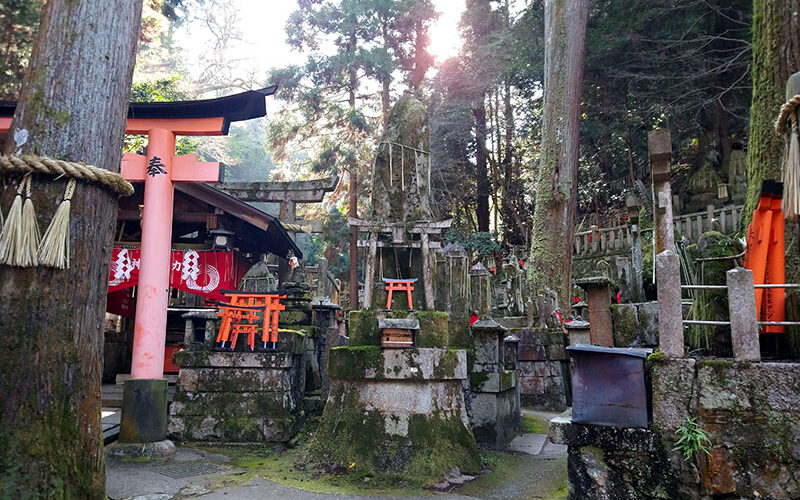Kyoto is a city that you must visit due to its importance in the history of Japan and for being one of the cities that best preserves the mysticism of old Japan. In Kyoto, you can become the last samurai and meet the famous geishas, which is no small feat for the city that was the imperial capital of Japan until 1868. It also boasts beautiful natural landscapes to explore with your family, some quite demanding, like the Fushimi Inari Pathway, and others more comfortable, like Arashiyama Bamboo Forest.
There is no doubt that Kyoto is a great place to visit. It has a variety of activities for the whole family, such as hiking while enjoying magical scenery, visiting temples while wearing a kimono, donning samurai armor complete with a sword to show off your ninja skills, and ending with an aerial view from the heart of the city.
You can visit Kyoto in a day if you start early. If traveling from Osaka, you can get there in less than thirty minutes by taking the rapid train. However, to fully enjoy the experience, it’s ideal to dedicate at least two days. Therefore, we present a two-day itinerary for Kyoto.
Travel tip: If you have been traveling around Osaka using the JR-WEST RAIL PASS, please know that it does not include the Shinkansen journey from Shin-Osaka to Kyoto. There are two options for those who have already completed that journey and are now in Kyoto. The first is to pay an additional fee at the ticket windows near the gates. The second option, to don’t pay an additional fee, is to take the Shinkansen back to Shin-Osaka and then take the JR LINE, which is included in the JR-WEST RAIL PASS.
Use a One-Day Pass to Explore the City
Kyoto’s train station connects it to other big cities like Osaka and Tokyo through traditional and high-speed trains. In Kyoto, you can move around by subway (150 yen) or bus (230 yen). However, a money-saving solution could be to group several attractions on the same day and use the Kyoto One-Day Pass, available in three versions:
- Bus One-Day Pass: This pass allows you to ride the Kyoto City Bus, Kyoto Bus & West Japan JR Bus as many times as you want. The price for adults is 700 yen, and for children, it’s 350 yen.
- Subway One-Day Pass: This pass allows you to ride any subway line as often as you want. The price for adults is 800 yen, and for children, it’s 400 yen.
- Subway & Bus One-Day Pass: This pass allows you to ride any of the following options: Subway Line, City Bus Line, Kyoto Bus (excluding certain lines), Keihan Bus (Yamashina & Daigo Area & others included *excluding certain routes), and West Japan JR Bus (excluding certain lines). The price for adults is 1,100 yen, and for children, it’s 550 yen.
These options are valid only for the day you purchase the pass. If you want to know where to get it, we suggest visiting the website of your chosen option.
Fushimi Inari Taisha + Pathway
Fushimi Inari is one of the most popular places in Kyoto and the main Inari Shrine with around a thousand torii gates. You can visit this place by taking a train to Fushimi-Inari station, just a few steps away from this attraction. Crossing the street, you will find the statue of a fox, which traditionally protects Inari Shrines.
The tour starts at the Main Shrine, surrounded by the Worship Hall, Tea-Ceremony Room, and Hall of Shinto Music and Dance, among other buildings. Additionally, lucky charms are sold here. Once you pass this point, the tour continues through the Torii gates and up the mountain.
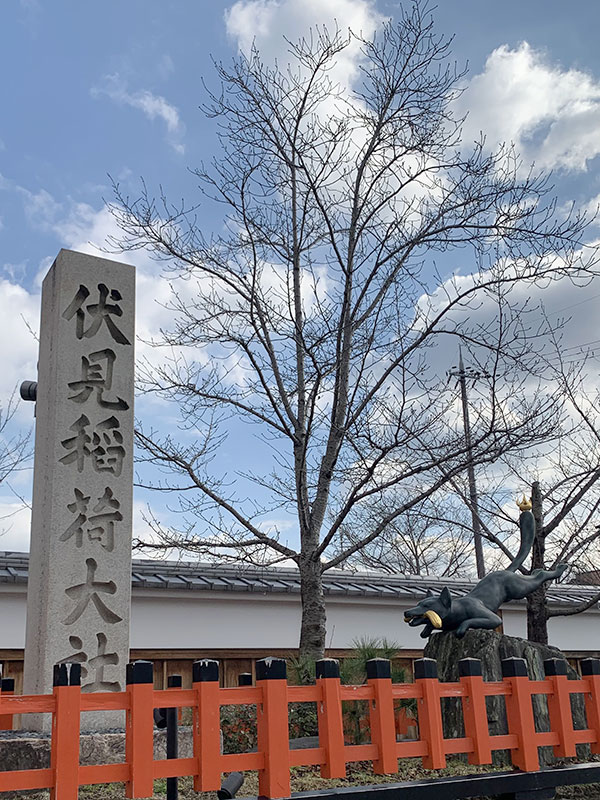
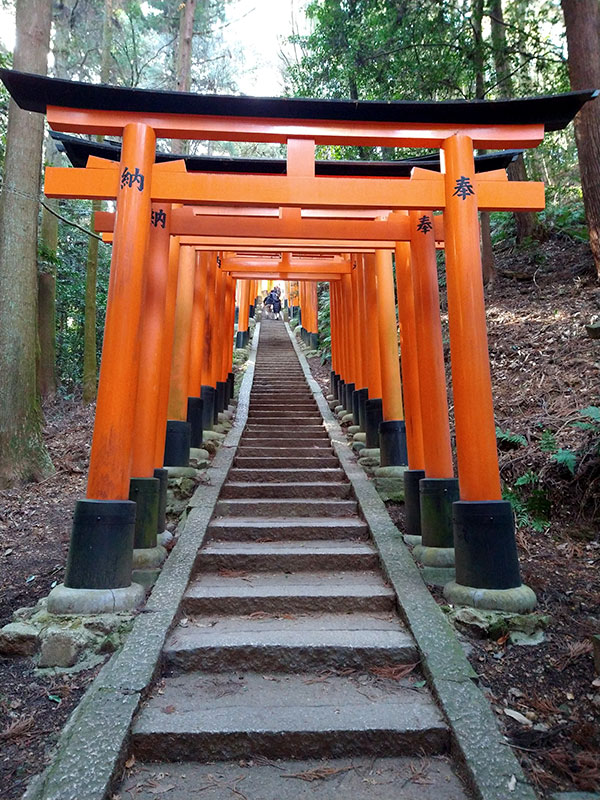
The journey through the Torii’s path to reach the top is almost 4.4km and can take two to three hours to complete. On the route, you will find basic services such as WC and food, although only at points dedicated to it, and from the point known as Crossroads to the top, there will be fewer options.
We recommend bringing water for hydration because even though the entire route is shaded, the high humidity and relevant physical effort can cause dehydration.
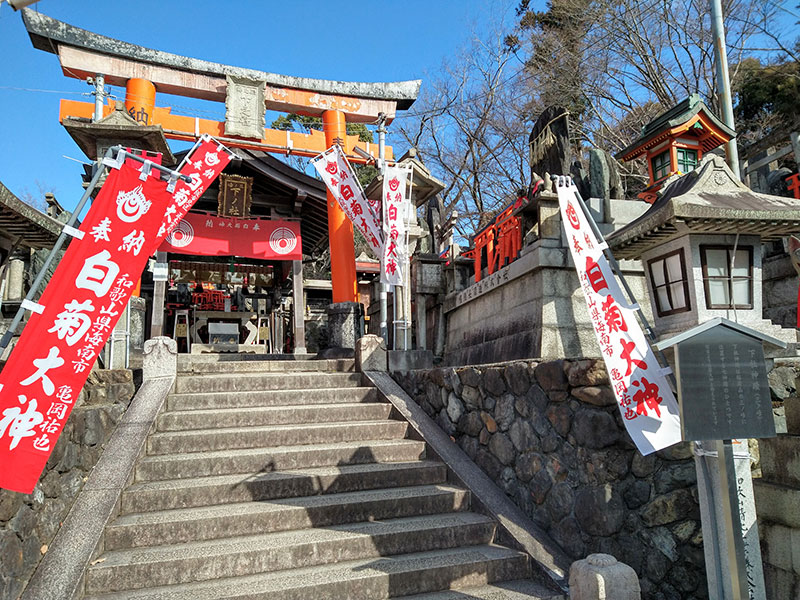
Entry is free and open 24 hours, but you may prefer to visit before noon for convenience. Due to its length, it is common to find large groups of people in the rest areas, and you may come across people running as part of their training on the trails.
Nijō Castle
This castle is a UNESCO World Heritage site and was the alternate residence of the shogun. The importance of this place lies in the fact that in 1867, the 15th shogun gathered the feudal lords of 40 vassal domains in the Ninomaru Palace to inform them of the end of the Tokugawa regime and to return power to the Emperor, thus beginning Japan’s current modern period.
If you’re a One Piece fan, you’re probably familiar with the term shogun. If not, it’s worth noting that it was the title of Japan’s military dictator, also known as the samurai government, for most of the period from 1185 to 1868. While the Emperor nominally appointed them, the shoguns usually held de facto power over the country.
There are two types of tickets for this place, one that only includes the gardens and a second one that includes the gardens + Ninomaru Palace. The interior of the Ninomaru Palace is famous for the murals that adorn the room, which served as decoration and even intimidation for visitors, such as the mural of the tigers. Additionally, there’s a recreation of the meeting between the shogun and the feudal lords where the regime ended.
Also, in the Ninomaru Palace, there is the famous Nightingale Floor. According to urban legend, the palace was built with a security system that caused the floor to make a noise similar to the nightingale’s song when walked on, intended to detect intruders such as ninjas. However, the reality is that the sound is merely a side effect of the floor’s construction and the passage of time. It is probable that, at the time, it would have been more of a source of annoyance for the shogun than a security measure.
This location permits photography in the gardens but not inside the Ninomaru Palace. Staff supervises adherence to this rule.
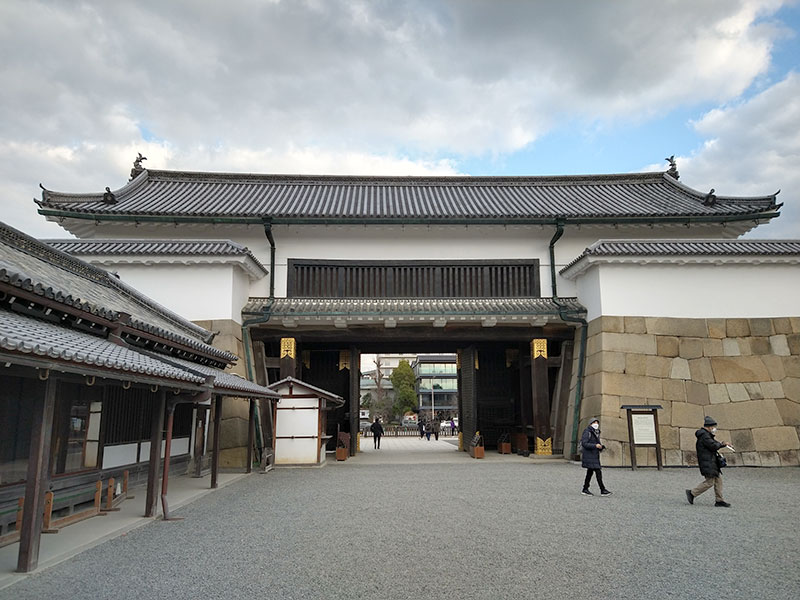

Love Fortune Stone
The love fortune stone is one of those simple things you can do for fun in a few minutes, but it can leave a lasting impression on you. The Love Fortune Stone is an activity for singles. According to the story, you should stand about 10m from the Love Fortune Stone and walk towards it with your eyes closed. If you find it, you’ll likely find the love of your life. If not, you might get used to being single. What do you think? Are you up for trying it?
Sanneizaka (Sannenzaka)
Near Love Fortune Stone, this pedestrian street has cafes, local food restaurants, and tourist shops. You will surely find a souvenir for your family and friends. Usually, it is heavily visited; during the week, you will also find students and many tourists. Many people consider it an excellent place for Instagram photos because of its beautiful wooden buildings in the purest traditional Japanese style.
It is worth visiting at night; its illumination will give memorable shots. Best of all, you will have photos with no people in the middle.
Like Sanneizaka, you can also visit Gion, which is very similar but has the plus of being the district of geishas. You can see them on their way to work at night, although as responsible tourists, we must respect them and not bother them. Remember that in some areas, signs indicate that taking photographs is prohibited.
SAMURAI & NINJA MUSEUM with EXPERIENCE
Samurais are an important part of Japan’s history, and this is probably one of the best places related to them. The place offers activities to learn about the Samurais and, to a lesser extent, about the ninjas.
The entry fee is 3000 yen, which includes a guided tour of the museum. In the beginning, there will be an introduction to the history of the Samurais and the significance of their armor. They will also take time to dispel popular myths about these warriors. Afterward, you can take photos with the armor on while wielding a sword. The staff is very friendly and will help you get the best photos.
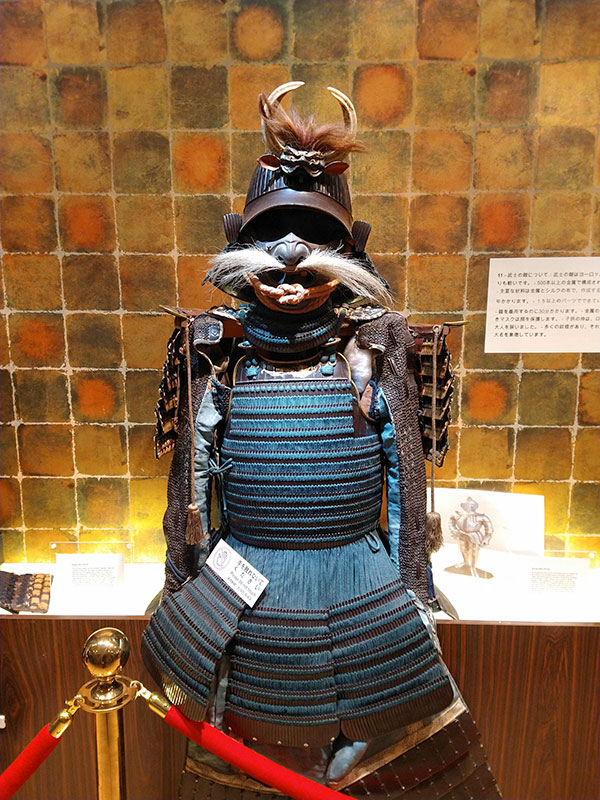
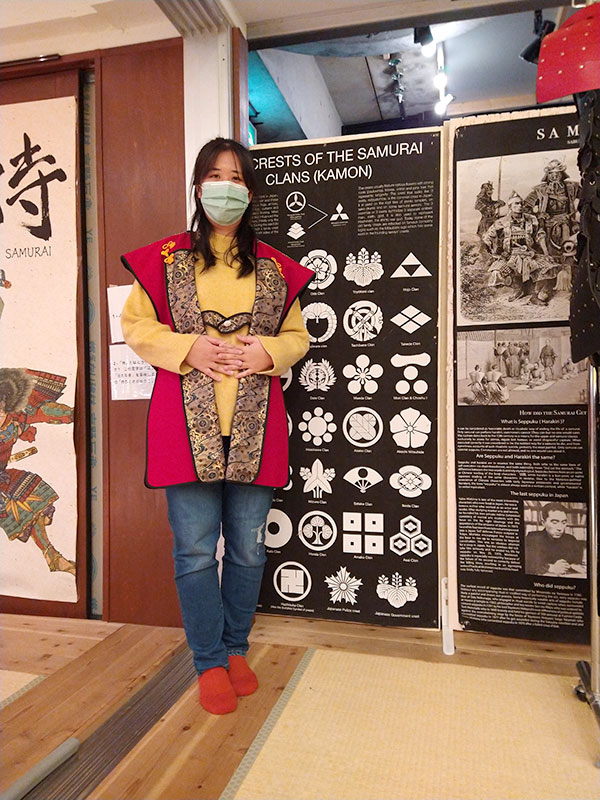
Finally, you can throw ninja stars and compete with other visitors to demonstrate who is the best ninja. The tour takes about an hour and a half.
We recommend making an online reservation; otherwise, you must wait until the next group’s turn. If you’re interested in samurais, we 100% recommend this activity. However, they still have much to improve in the area of ninjas.
Nishiki-Tenmangu Shrine
Once you finish your experience at the Samurai Museum, you can head to Nishiki-Tenmangu Shrine, which will take a few minutes. You’ll surely enjoy this small temple in the middle of the market. It will provide a moment of relaxation, and its lanterns, statues, and fountains are beautiful.
Kinkaku-ji
Fushimi Inari, Nijō Castle, and this attraction are the most popular in Kyoto. You can tour it in 45 minutes; the entrance fee is 400 yen.
It’s worth visiting for those who enjoy traditional Japan. Currently, it’s a Buddhist temple and is particularly famous for its golden exterior. Due to its popularity, it’s better to visit it in the morning.
Apart from the temple, the gardens are beautiful, and depending on the season, they provide a different range of colors.
Kimono Forest
You can do it if you’re in the area or plan to visit the Arashiyama Bamboo Forest. Kimono Forest is an area near the train station that you can visit for free anytime since it’s in a public area. The attraction consists of several cylinders with patterns similar to traditional kimonos.
Kinomo Forest offers a spectacular view when the cherry blossoms bloom during the Hanami season. Besides the Bamboo Forest, you can also find a nearby hot spring for your feet.
Arashiyama Bamboo Forest
Arashiyama Bamboo Forest offers paths to reconnect with nature. The best moment to visit this place is early morning to avoid crowds. However, the crowds may disappear as you venture further into the forest.
Along the path near the river, there’s a restaurant with local-style food ideal for enjoying lunch. The best way to get there is by JR train, and entry is free.
Kyoto Tower
Kyoto Tower is a 328 ft (100 m) tall tower (131 m including the spire) located in the city’s heart, a few steps from Kyoto Station Building. It’s another place you must visit in Kyoto because of its panoramic city view.
The first access is at 10:30 am, and the last is at 8:30 pm, so you can leave this activity to see the city at night. However, sunset is a much better experience as the city could be brighter at night. The tower has restaurants, shops, and of course, the observatory.
You can visit the observatory in 30 minutes. Some even recommend visiting the observatory if you have an hour free before boarding your train, given its proximity to the train station. The entrance fee ranges from 200 yen for children over three years old to 900 yen for adults.
Kyoto Station Building
Before boarding your train, you can explore the Kyoto Station Building for a few minutes. You can enter from the bus parade and ascend to the top using the escalators. From there, you’ll have a great city view for free. It may not be as high as the Kyoto Tower, but it serves well as a viewpoint. Additionally, you can enjoy a screen embedded in the escalators at night, making a great background for your photos.
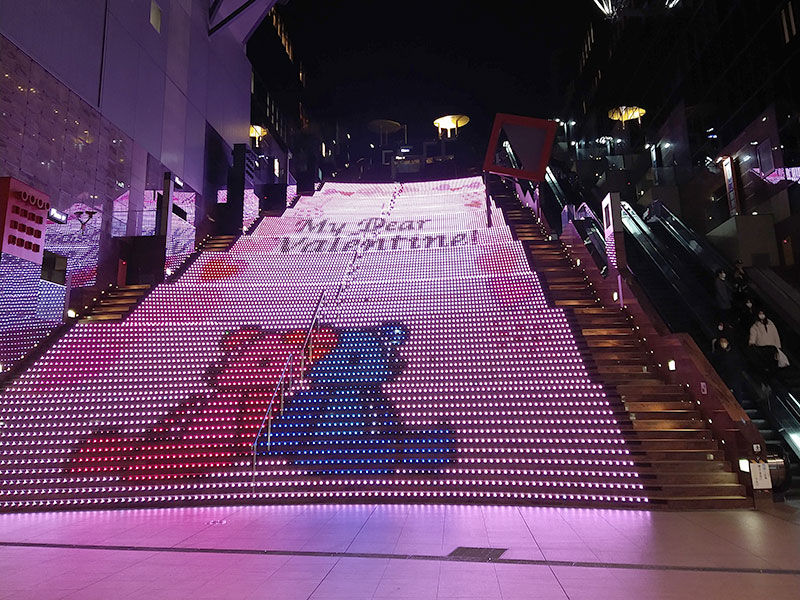
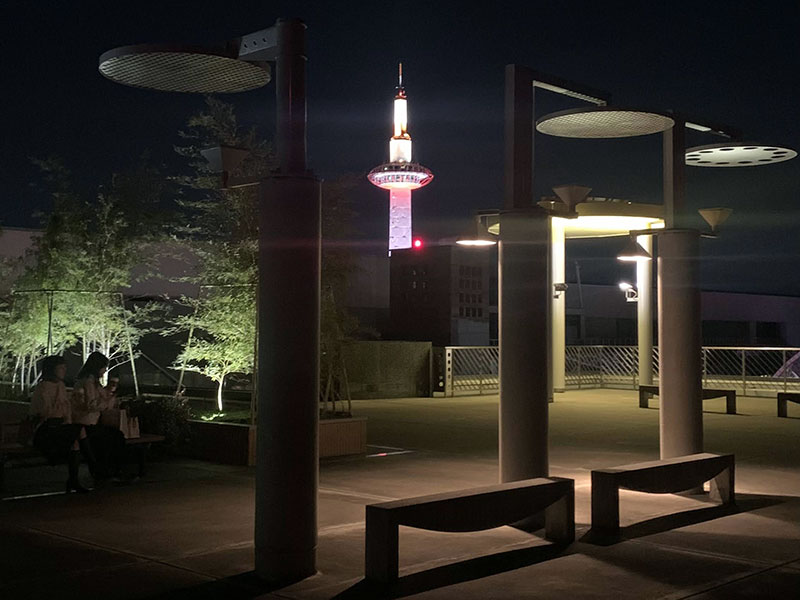
Conclusion
In conclusion, Kyoto offers a wealth of cultural and historical attractions worth exploring. In just two days, it’s possible to see some of the city’s most iconic sites, including the stunning Golden Pavilion, the serene bamboo groves of Arashiyama, and the bustling streets of Gion. Visitors can enjoy traditional Japanese cuisine and immerse themselves in the city’s rich cultural heritage. Whether you’re interested in history, art, or simply soaking up the atmosphere of this enchanting city, Kyoto is sure to leave a lasting impression on all who visit.

